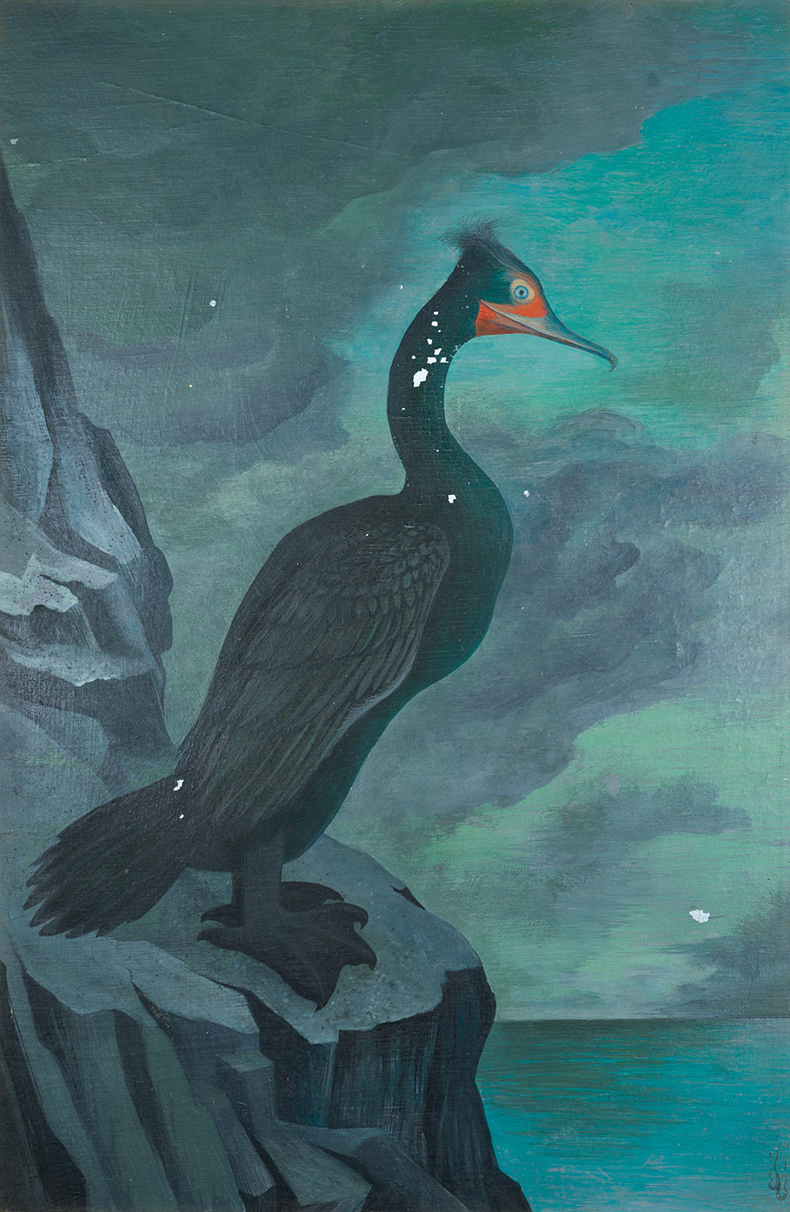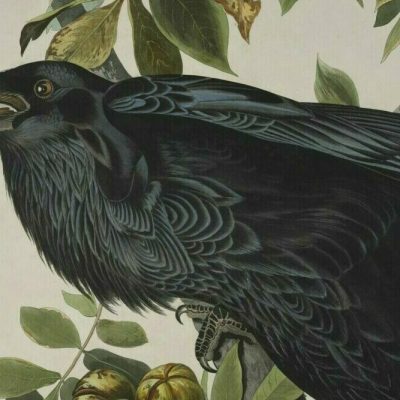From the September 2024 issue of Apollo. Preview and subscribe here.
We met in a barn. That is the first thing to say. The setting was a Saturday morning barn sale, listed in The Weekly Packet, which is the name here on my peninsula in Maine for the four-sheet newspaper that covers local culture (lively, earnest), disputes concerning boats and docks (scandalous), police activities (rare) and, most importantly, listings of yard sales and barn sales and jumble sales, which typically take place on Saturday mornings. So, the bird and I locked eyes when I was expecting to browse mouldering books or magazines, or to pick up a pretty pitcher for my farmhouse table.
There is the cormorant, then, and the context. I want to give you both. The first context is the barn sale, the strangeness of spotting this painting where it sat on the floorboards, leaning back against the wall, a painting, at first unascribed to any hand, that seemed to zoom my brain into another place – not a place alien to Maine, but not unlike a room in a museum in a city, somewhere. It had a delicacy and precision and oddity that separated it from the amateur and sentimental waterfowl scenes typically hung in the cottages and cabins that serve as summer rentals, yet it wasn’t obviously modern, either. The bird’s sturdy, eloquent posture, the grip of its wide-webbed toes on the promontory, the brickwork intricacy of its feathered wing, all these seem in active conversation with the stormy sky and jagged crags that make up its surroundings – and the consistent palette, too, seems to suggest that the sky and bird and rocks are made up of versions of the same stern stuff. The bird on the rock seems to convey some air of grandeur or endurance, of a creature who is meeting the world at a philosophical juncture, a crossroads of the absolute. There’s something Nietzschean afoot. This bird might be Zarathustra’s reincarnation.
That is until you do what you probably did first, what I did: look this protagonist in the face. The pink and scarlet surrounding the eye and beak of the bird are an abrupt break from the grey-green and steel-blue tones of sea and sky and rock. The colours serve as a warning that the bird’s expression, its eyes, those windows into its soul, express a total obliviousness to the dire murk and admonitory gloom of the painting that contains it. This bird’s a doofus, a practical joker, perhaps, who has just placed a stolen glazed doughnut into a bald eagle’s or egret’s nest, just to see what would happen. The bird isn’t tuned in to your projections, or it has auditioned them and found them merely amusing. It is keeping its own counsel. Like the famed honey badger, this bird don’t give a fuck. Its eyes are, in fact, flipping you the bird.
Title unknown (n.d), Charles Child. Collection of the author. Photo: Sam Walker

This disparity, between the picture’s depths and the cormorant’s elusive blitheness, creates an enthralling tension. It was love at first sight for me. I made my enquiry. ‘Fifty dollars,’ came the quote (high for a barn sale), but before I could try to bargain it down, the sellers closed the conversation and the deal – as they were probably always certain to do, once they had a buyer on the hook – by telling me the name of the painter.
Here’s a bunch of context, then: Charles Child was the twin brother of Paul Child. Paul Child was the husband of Julia Child, the famous cookbook author and television performance-chef. There are things you can learn about Charles Child on the internet. As a college student, he edited The Harvard Lampoon. He and his brother were close; Julia and Paul were married in his backyard in Pennsylvania. He studied art in Paris in the 1930s and married an oil heiress. He spent his summers as I do, in coastal Maine. He painted a lot of fish and birds (of course, to paint a cormorant is almost to split the species difference). You can see a few more images of his pictures if you google him, but not many. He’s not a very famous person, but he’s a bit more a famous person than he is a famous painter.
The medium is egg tempera. The picture is chipped, not everywhere, but in areas where a certain shade of black or deep blue was mixed, on the neck and lower feathers – suggesting an instability in that one compound. I like the chipping and have refused to have the painting restored, although I should probably at least get it stabilised by a transparent sealant. I’ll look into that. ‘Egg tempera’ makes the whole thing funnier, since birds lay eggs, and since Julia Child cooked eggs (all cooks cook eggs). I sometimes think of the cormorant hooting in the voice of Julia Child, whose hooting exclamation was one of her signature sounds in her television kitchen. The painting hangs in my Maine farmhouse, over a piano. One day the grown child of one of its former owners came over and saw it and shuddered. ‘I always hated that bird,’ she told me. This is why it has come to live with me; I love it.
From the September 2024 issue of Apollo. Preview and subscribe here.


